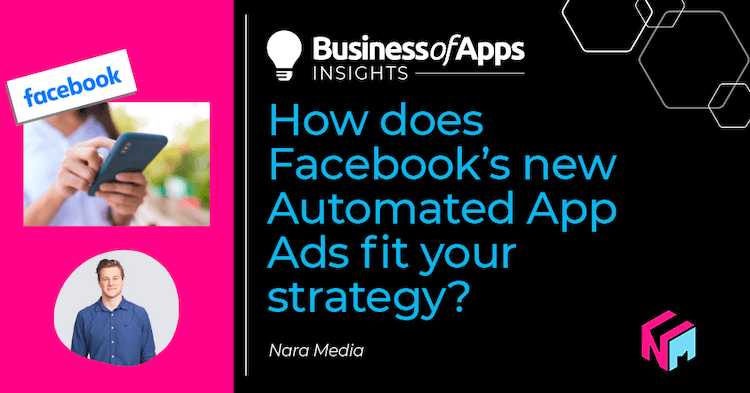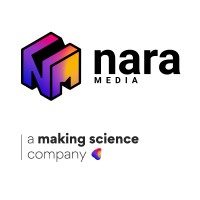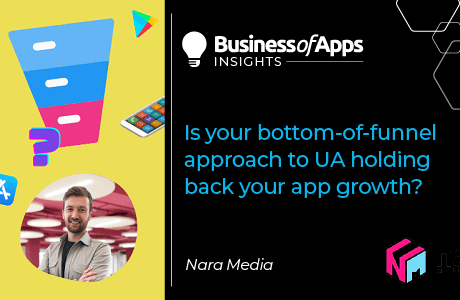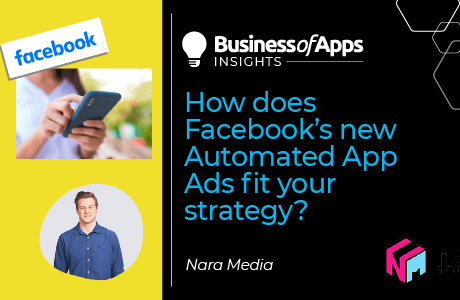
In the fast-paced world of digital marketing it can be easy to become overwhelmed with a constantly expanding list of shiny new features and formats. Almost always they come with the promise of better performance, easier management or new audiences. And with this there also comes pressure to adopt it into your marketing activity.
However, there is no one-size-fits-all approach to advertising, and what’s new is not necessarily what’s right for you.
As advertisers it’s crucial to remain conscious of the business objective, and the marketing strategy put in place to achieve it. Only when a new feature aligns with this should the case be made for adopting it. As tempting as a cheaper CPA or reduced manual management may be, a step away from your business objective is a step in the wrong direction.
Here’s a current example:
Facebook launched a new campaign format, Automated App Ads (AAA), in Q3 this year. Its promise to “allow advertisers to effortlessly achieve the best performance from their app install ads” sounds attractive. But how does it fit into your marketing strategy?
What are Facebook’s Automated App Ads?
AAA campaigns are designed to streamline an advertiser’s mobile app install campaigns – built on a simplified structure containing only one ad set and one ad.
They allow the advertiser only very broad targeting controls (limited to just country, language and optimization goal). But use a huge creative capacity, with up to 50 creative assets, 5 texts and 5 headlines in each campaign all wrapped up into one dynamic ad.
As is the case with most current innovation in the industry, the format is built on powerful machine learning, requiring fewer inputs, minimizing manual control, and vowing to deliver stronger performance for it.
On the face of it this new format looks to be a fantastic solution for all mobile app advertisers. And having tested it since its Beta release over the past 3 months we did indeed find that it delivers fantastic performance.
However, we also found that it poses some unique and significant challenges.
So before jumping head first into this attractive new option, an advertiser needs to understand if it’s right for them. To help with this decision, we’ve summarized the benefits and drawbacks that we found.
When should you use it?
If consistent performance at scale is your goal, AAA is a fantastic solution.
We set up a test, comparing 2 campaigns, identical except for one was set up as a standard campaign and the other as an AAA campaign. Whilst the standard campaign returned a 22% stronger ROAS, after three weeks audience fatigue had made ROAS fall by 37% – and we paused the campaign.
By contrast, the AAA campaign delivered a ROAS just as strong in its 15th week as it did in the first – spending 9x more overall. In fact, ROAS was 15% higher over the last 3 weeks of the campaign in the first 3 weeks. By far and away the biggest advantage that we have found from AAA campaigns is longevity, and time saved on manual management.
When should you not use it?
Whilst the above may be an attractive proposition, there are certainly some advertisers for which the format would be an unsuitable choice. Three main areas where AAA presents a challenge are insights, creative and control. If any of these form the foundation of your media strategy then AAA may not be for you.
Insights:
By design, AAA campaigns provide limited visibility on performance breakdowns. The idea is to encourage a hands-off approach and allows the algorithm the freedom it needs to be most effective. The loss of the usual segmentation (network, age, gender, placement) means it’s impossible to learn why your ads are working well, or not.
This poses an issue for any advertiser who does not already have a clear picture of who their target audience is, where they sit on the platform and how they behave. A lack of understanding now exposes you to uninformed decision making later.
Creative:
Whilst the 50 creative assets is a maximum limit, it’s also the recommendation. Utilizing less than this diminishes the benefit of dynamic creative optimization. Ideally we want to give the campaign as much option as possible to allow it to find performance across a range of placements for a range of users with differing motivations and preferences.
Of course then, AAA is not suited to an advertiser with only a limited library of creative. The double edged sword is that limited insights will also make future creative iteration and production difficult.
Control:
When managed properly, automation more often than not yields stronger results than a manual approach. However in the case of AAA, especially heavy reliance on automation across all areas of the campaign’s operation means less control. For example how would an advertiser ensure aggressive bidding over a short sales period? Or that new creative concepts get a fair delivery to test their efficacy? Or hit retargeting users with bespoke messaging? In short, they can’t.
If fine tuning is needed, perhaps due to small budgets, unique challenges or specific target considerations, you won’t find it in AAA.
Does AAA fit your strategic priorities?
In summary, AAA is best suited for established advertisers with a good understanding of their product and audience, with a large library of creative assets and a simple performance goal. These advertisers can afford to accept a lack of insights for the trade-off of impressive longevity and time saved in campaign management.
However, an advertiser who needs better insights into audiences and creative, with less creative resources and a requirement for granular control should be questioning the suitability of AAA.
A final note of caution
Whilst the ‘latest-and-greatest’ often look like attractive options, they are not by default the most appropriate. We absolutely need to embrace development and innovation, but with caution and in the context of the wider business goal. An advertiser who asks “what’s new?” is on the pulse. But one who asks “can what’s new help me?” will always win out.












